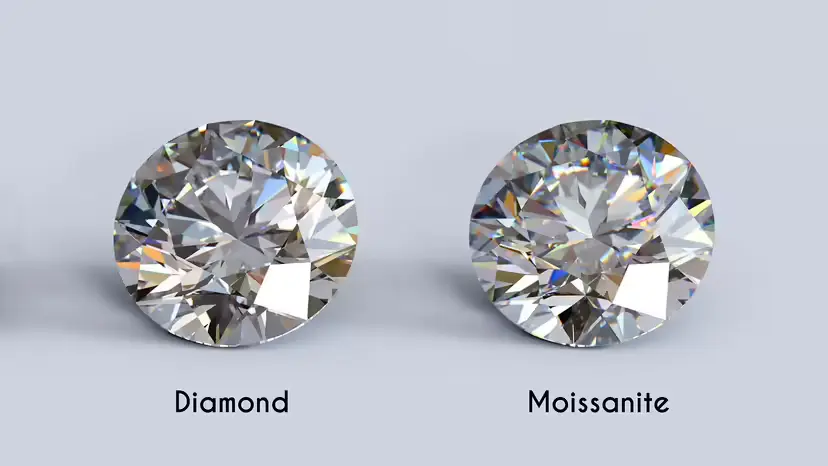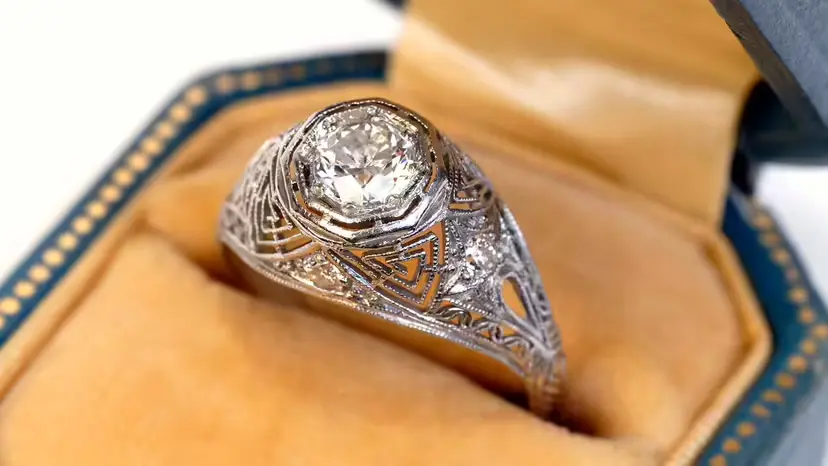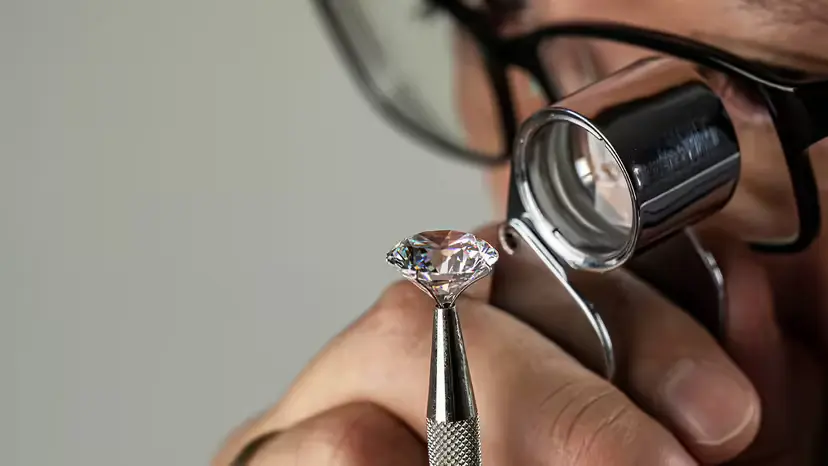
The search for the perfect engagement ring may be a mammoth undertaking for any couple who is prepared to take the next step in their life and start a new chapter in their lives. According to the International Gem Society, the most conventional options for the stones that go into engagement rings are diamonds, rubies, sapphires, and emeralds. Diamonds are also popular.
But what if you are looking for something that is less expensive? Perhaps you should also consider moissanite in your search. When comparing moissanite with diamond, there are several factors to take into account, such as the two stones' respective levels of beauty, durability, and cost. Continue reading to find out a little bit more about the reasons why moissanite is becoming an increasingly popular option as a stone for engagement rings.
A Concise Overview of the Background of the Engagement Ring
The majority of anthropologists believe that the engagement ring may be traced all the way back to ancient Rome. However, the present custom of giving a diamond ring as a token of one's love and fidelity did not begin until 1477, when Austrian Archduke Maximilian Ferdinand commissioned a one-of-a-kind engagement ring for Mary of Burgundy. This event is considered the beginning of the modern practice.
Ferdinand yearned for a magnificent gem that was not only incredibly unique but also dazzlingly brilliant and would stand the test of time. As a result, he zeroed in on a diamond, which is widely acknowledged to be the hardest naturally occurring substance on the planet.
It wasn't until the British company De Beers began mining diamonds on a commercial basis in South Africa that the demand for diamonds and other precious gemstones exploded in the fine jewelry industry. This is despite the fact that diamonds and other precious gemstones were commonplace in upper-class society. Because of this increase in availability, they are now more readily available to the typical customer in the middle class.
In 1947, Hollywood celebrities helped promote De Beers' slogan, "A diamond is forever," and as a result, a wave of public interest brought scores of hopeful grooms to jewelry stores to locate their beloved a fantasy engagement ring. De Beers' tagline "A diamond is forever"
Customers who are interested in economical and environmentally sustainable alternatives have recently been gravitating toward distinctively colored gemstones and lab-created diamonds. This is despite the fact that diamonds continue to be the traditional option. In addition to these factors, the popularity of moissanite stones has increased due to the fact that they are virtually indistinguishable from actual diamonds.

To Begin, What Is a Diamond?
Graphite and carbon are the two primary components of a natural diamond, which is a naturally occurring mineral. These carbon-containing fluids dissolve other minerals over the course of billions of years while they are subjected to intense pressure and heat. In their place, sparkling diamonds are left behind.
Geological activity and volcanic eruptions bring diamonds that have been dormant in igneous rock closer to the Earth's surface. Igneous rock is rock that formed when hot, molten rock crystallizes and hardens. Diamonds are found in igneous rock.
Say hello to my newest ring design
— LukeyLux // CUSTOM ORDERS OPEN (@lukeylux) September 4, 2020
𝙔𝙫𝙤𝙣𝙣𝙚
Features:
9x7 Oval Cut gemstone
made with either solid sterling silver or solid 14kt Gold
accents are Cubic Zirconia (can be made with moissanite or diamond too)
This one is a gift for @chey_taylor24 from @l0calpendeja pic.twitter.com/8c1s7PCKPo
The rarest sort of diamond that can be found in nature is one that is completely colorless and transparent. Less than one percent of all diamonds extracted are graded as D or E, which indicates that they are colorless. However, nitrogen, boron, and other atoms can add impurities to the crystalline structure, producing a vast array of hues ranging from red and pink to deep blue and yellow gold. These colors can be produced by adding nitrogen, boron, and other elements.
What exactly is moissanite, then?

In 1893, Henri Moissan, recipient of the Nobel Prize in chemistry, discovered the first moissanite gemstones in a meteor crater in the state of Arizona. Because of his lack of experience, Moissan confused the moissanite stones with diamonds and was eager to capitalize on his valuable windfall.
It was not hard to understand why he had done what he did wrong. Silicon carbide is what moissanite is, and the diamond-like stone possesses similar qualities to diamonds, such as brightness, fire, luster, and hardness. Nowadays, in order to determine whether a gemstone is made of moissanite or a genuine diamond, one needs to make use of specialist equipment. In contrast to the well-known diamond imitator cubic zirconia, which is also known as CZ, moissanite is highly uncommon, dense, and long-lasting.
Related link : 25 of the Most Beneficial Duties Around the House for Children of Any Age
There are three key distinctions to be made between natural diamonds and moissanite.
When looking for an engagement ring, it is important to keep in mind the following frequent distinctions between moissanite and diamonds:
1. Diamonds are of a much higher hardness than moissanite.
On the Mohs scale, which is a measurement of the hardness of minerals, a naturally occurring diamond receives a score of 10, which is the greatest possible value; however, naturally occurring moissanite scores an impressive 9.25. The surface of either of these minerals can be scratched, they can sustain enormous pressure, and they are not damaged by friction. Both of these minerals are highly robust.
2. When Compared to Diamonds, Moissanite Exhibits Greater Fire and Brilliance
Because crystalline silicon carbide has a greater refractive index than diamonds, it displays more sparkle and "fire" when light strikes the surface of the stone.
Natural moissanite stone, in contrast to diamonds, possesses the remarkable ability to keep its bright rainbow flashes of what many people refer to as "disco ball glamor."
3. The cost of moissanite is significantly lower than that of diamonds
A natural moissanite stone is much lighter than a diamond, and as a result, it does not adhere to the same laws of price indexes that apply to diamonds. Instead, the price of an emerald is determined by its size and color, but the price of a diamond is based on the "Four Cs," which are the carat weight, color, cut, and clarity. Because of this distinction, moissanite might be a more cost-effective alternative to diamond engagement rings, particularly for customers who are looking for larger stones that are still within their price range.
Should You Get an Engagement Ring Made of Moissanite Instead of a Diamond?
Because rings are more brilliant and less expensive than typical diamond rings, they provide ideal alternatives to traditional diamonds. However, despite the fact that moissanite stones do have a sparkle, there are others who believe that it is rather excessive for day-to-day wear, particularly in comparison to true diamonds. (Do you remember the connection to the disco ball?)
Additionally, moissanite and other lab-created stones may be better for the environment than certain diamonds, such as the so-called "blood diamonds." Moissanite stones, on the other hand, are created in labs, whereas these other gems are extracted from the ground using methods that involve the use of forced labor, hazardous working conditions, and uncontrolled business practices.
Natural diamonds will always be preferred by some customers over diamond imitations such as cubic zirconia and moissonaite. This is due to the fact that diamonds maintain their value and continue to be seen as an age-old symbol of undying love and commitment in a romantic partnership.
In the argument between moissanite and diamond, whichever choice you end up making is a matter of personal preference. You should select an engagement ring that complements your sense of taste, as well as your financial and personal constraints.

